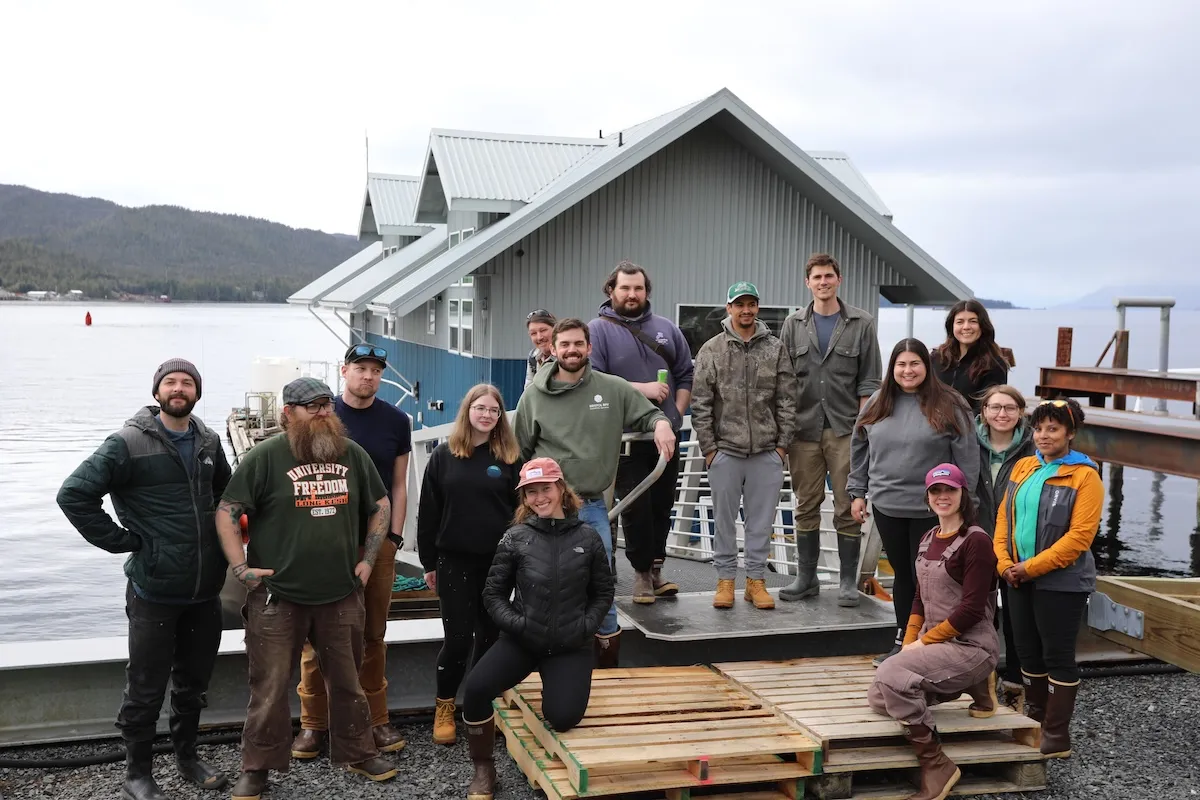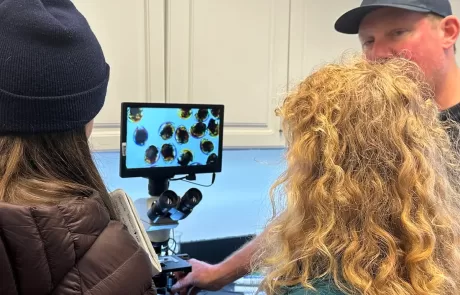Search AMC News
Alaskans Trained in Oyster Cultivation
May 19, 2025
Lead Entities: Alaska Sea Grant, University of Alaska Fairbanks
Grant Component: Workforce Development

Last month, two dozen Alaskans gathered in Ketchikan to dive into a topic essential to the state’s growing mariculture industry—oyster seed production.
While “seed” might sound like an odd term for shellfish, it makes perfect sense to oyster growers. Each season, Alaskan oyster farmers receive shipments through the mail akin to bags of plant seed headed to terrestrial farms—except oyster seed, as small as a few millimeters, comes packed in coolers with gel packs.
This seed is sourced from hatcheries—land-based facilities where oysters are spawned and nurtured for up to three months. Nearly all seed used in Alaska is imported from out of state, most commonly from Hawaiʻi, where warm waters provide ideal conditions for oyster seed production. Hatcheries in Washington, Oregon and California produce seed as well, and some of these are permitted to import seed to Alaska.
Out-of-state hatcheries are crucial to the Alaskan industry, as they supply Alaskan farmers with high-quality seed. However, out of state seed supply can sometimes be limited, which presents a vulnerability to the state’s industry. Additionally, growth of the industry has spurred interest to build hatchery capacity in Alaska to increase supply.
In response, Alaska Sea Grant, the Alaska Mariculture Research and Training Center, University of Alaska Southeast and OceansAlaska are collaborating to provide intensive, hands-on hatchery workshops for farmers, researchers and industry professionals. This spring, two workshops were offered, including an advanced “train-the-trainer” workshop and an introductory workshop.
Participants in the workshop included oyster farmers, graduate students from the University of Alaska Fairbanks and NOAA researchers. A participant remarked: “The course gave me a much better sense of oyster mariculture in Alaska from start to finish. I had some real gaps in knowledge around the hatchery process, so filling some of those in was really helpful.”
Another participant commented, “The hands-on components were super helpful!”
A farmer mentioned that the “experience really helped me to understand the process for oyster seed production before it reaches my farm.”
Future hatchery workshops like this one are planned. Additionally, there are plans to offer focused workshops on topics such as microalgae cultivation or hatchery techniques for other shellfish, such as clams, scallops, and crab. To receive information about upcoming workshops and opportunities, sign up for the Alaska Mariculture Research and Training Center monthly newsletter. For more information, contact Alaska Sea Grant shellfish mariculture specialist James Crimp.
Background
Southeast Conference (SEC) is the federally designated Economic Development District (EDD) for Southeast Alaska, as well as the state designated Alaska Regional Development Organization. SEC’s mission is to undertake and support activities that promote strong economies, sustainable communities, and a healthy environment in Southeast Alaska.
In September 2022, Southeast Conference was awarded a $49 million U.S. Economic Development Administration (EDA) Build Back Better Regional Challenge (BBBRC) grant to catalyze a viable and sustainable mariculture industry in Alaska, supporting the production of shellfish and seaweed, for the long-term benefit of the state’s economy, environment, and communities.
SEC leads the Alaska Mariculture Cluster (AMC) grant coalition, which includes members of Alaska’s mariculture industry, tribal organizations, regulatory agencies, university system, regional EDDs, trade organizations, and others. A Governance Body, composed of AMC coalition leaders and Tribal executives from each of the project regions, guides the grant’s work and equity metrics.
The AMC has complementary grant components designed to break down barriers and develop Alaska’s mariculture industry. The Overarching Narrative explains how the grant components work together to grow the industry in an equitable and responsible manner. The full project period for the AMC BBBRC project is October 1, 2022 to September 30th, 2026.



